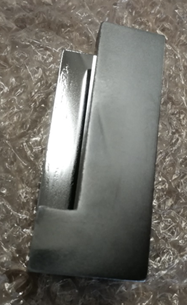| BEaTriX: a facility for testing the modular elements of ATHENA | |
|
The monochromators |
|
|
After the collimation, the beam needs to be filtered tightly in energy to ensure the final collimation in the expanded beam. This is obtained via a 4-fold diffraction on silicon crystals, cut
parallel to the (220) planes. |
|
 | |
| One of the two channel cut crystals in silicon to be used as monochromators in the 4.51 keV BEaTriX beamline (by Crystal Scientific, UK). | |
| Banner image (by Stefano Basso): BEaTriX facility - INAF Brera Astronomical Observatory site of Merate (LC) - Web site credit: B. Salmaso, D. Spiga, and the BEaTriX team - M.R. Panzera | |
